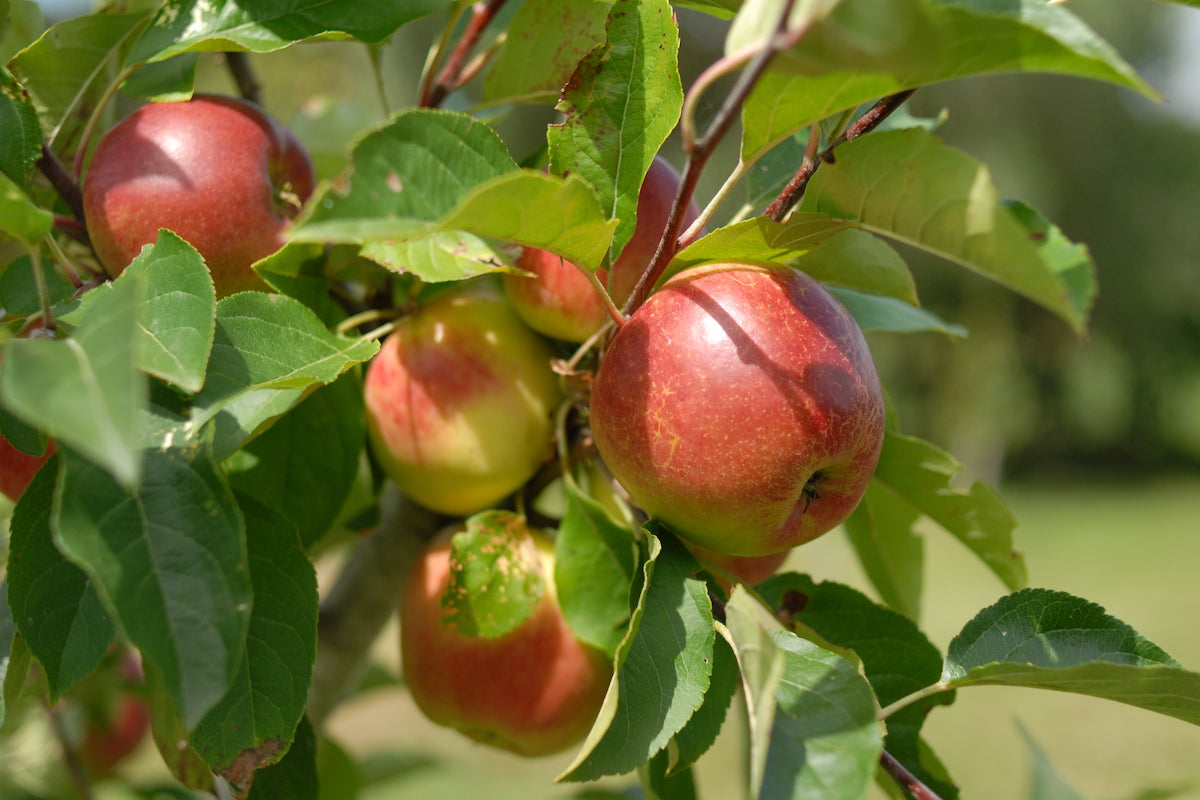Choosing the right fruit tree
Winter is the best time of the year to plant pip and stone fruit. At this time of year you’ll be able to buy bare-rooted fruit trees. The advantages of a bare-rooted fruit tree are they can have up to twice as many roots as trees in bags and they usually cost less. The advantage of a tree in a bag is that they’re available to buy over a longer period of time.

We recommend buying from a nursery in your region as they will specialise in fruit tree varieties that do well locally.
The other consideration is the rootstock fruit trees are grown on, so always check that out. For example, an apple grown on EM9 rootstock will be a dwarf tree, on MM102 it’ll be small, on MM106 it will be medium-sized. With citrus, there’s a rootstock called Flying Dragon which means the trees will stay small and compact. There are many other types of rootstock that fruit is grown on and it’s just a matter of asking the nursery people.
Planting
Key considerations are making sure your tree ends up sitting proud of the ground level. The level will sink slightly as the compost and soil settle, so allow for this as you plant. If your plant is bare-rooted, site the strongest root towards the prevailing winds and cut it back at the time of planting by half to two-thirds - there should be 3-4 main branches left.
For detailed instructions, have a look at our video here.
Pollinators
Not all fruit trees are self-fertile and they need another apple or pear or plum of a different variety to pollinate them. Once again, ask at the nursery you’re purchasing from or check out our lists here.
Feeding
Deciduous fruit trees – in the first year apply a well-balanced fertiliser like Natures Organic Fertiliser in spring only and some compost around (but not touching) the trunk. From the second year on, apply a nitrogen source like sheep pellets or chicken manure along with the well-balanced fertiliser in spring only.
Evergreen fruit trees (subtropicals) – as above, but twice yearly in spring and autumn. They will also benefit from compost and mulch spread over the surface roots in spring and autumn every year.
Pruning
Apples, pears and plums are best pruned in autumn as this lessens the chance of disease entering the cuts. If you have large cuts, it’s good practice to apply a pruning wax. This video shows you how to make an organic pruning wax.
The basic principles of pruning a fruit tree are:
- Cut off any growth below the graft and any water shoots
- Cut out branches that are crossing or rubbing another branch, as well as any branches that are damaged by cicadas
- Aim for a vase shape which means cutting out central leaders, as this allows maximum air movement and sunlight
- Aim to prune all branches to the same height
- Don’t worry if you think you’ve gone too hard, as the tree will always grow back
- Aim to prune in the Last Quarter moon phase

Subtropicals
These include citrus, avocados, tamarillo, passionfruit, bananas, feijoas and guavas. They are best planted in autumn while it’s still warm and they appreciate the rain in winter to establish themselves.
Prune citrus trees in the winter as lemon borer is flying in the warmer months and can enter through a cut.
Figs and grapes need to be pruned heavily every year.
Pests and diseases
Guava moth - the biggest problem for fruit tree growers in the north at the moment. We recommend applying neem granules to the soil beneath the tree twice yearly in spring and autumn, as well as in spring bagging up neem granules in small breathable bags and tying these to branches. It’s the smell that repels the moth which flies at night and the more you cover the tree with the smell, the better chance you get. As well as neem, we recommend spraying the tree when it’s infected with an organic caterpillar spray (you’ll see Btk on the back of the container).
Codling moth - we make up a solution that we hang in the branches of apple trees in particular. See this video for how to make it. It’s best to have these traps up hanging in your trees before bud burst.

Lemon borer – cut what you reasonably can out, then if there are still holes, poke some wire down the hole till you skewer the borer. See this video on care of citrus including managing borer.
Bees and beneficial insects
Lastly, encourage bees and beneficial insects into your garden or orchard by planting an understorey of flowers under your fruit trees. Kings Seeds sell an alyssum for orchards. Other plants that attract bees are clovers, buckwheat, carrots left to go to seed.

-----
Organic Edible Garden’s vision is to make organic edible gardening achievable for everyone. Visit their website for Getting Started videos, and regular blog posts to find out what to do in your edible garden.
Read more

With the shortest day of the year behind us, it is the perfect time for a midyear reset. Every year, I plan to read more than the previous year, some years it happens, others you would never know t...

With the shortest day of the year behind us, it is the perfect time for a midyear reset. Every year, I plan to read more than the previous year, some years it happens, others you would never know t...






